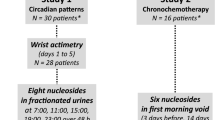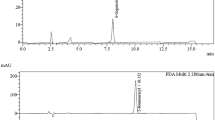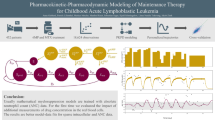Abstract
As part of a programme assessing the pharmacokinetics of oral thiopurines given for lymphoblastic leukaemia, we assayed intracellular metabolites of mercaptopurine in children from all over the United Kingdom who were given a standard dose of the drug. The metabolites we measured, thioguanine nucleotides and methylmercaptopurines, are products of two competing metabolic pathways and would be expected to show an inverse correlation. A total of 327 children from 17 centres in the UK were studied. All were on the same therapeutic schedule of mercaptopurine. All had been on an unattenuated full protocol-directed dose (at least 75 mg m-2) for a minimum of 7 days before assay. There was a very wide variation in the concentration of the two metabolites measured; the thioguanine nucleotides ranged from 0 to 1255 pmol per 8 x 10(8) red cells (median 289, lower quartile 210, upper quartile 377) and the methylmercaptopurine metabolites ranged from 0 to 46.3 nmol per 8 x 10(8) red cells (median 5.18, lower quartile 2.31, upper quartile 11.59). The anticipated negative correlation was not apparent, but the ratio between the two was not randomly distributed. No child had both metabolite concentrations in the upper quartiles, but in 32 (10%) children the concentration of both metabolites was in the lower quartile. Of the 32, only one metabolite was detected in four and none at all in six. The most likely explanation for these findings is that a minority of children with lymphoblastic leukaemia fail to take oral mercaptopurine either totally or intermittently. The extent of the problem is unknown, but we suspect it may be clinically important in at least 10% of patients.
This is a preview of subscription content, access via your institution
Access options
Subscribe to this journal
Receive 24 print issues and online access
$259.00 per year
only $10.79 per issue
Buy this article
- Purchase on Springer Link
- Instant access to full article PDF
Prices may be subject to local taxes which are calculated during checkout
Similar content being viewed by others
Author information
Authors and Affiliations
Rights and permissions
About this article
Cite this article
Lennard, L., Welch, J. & Lilleyman, J. Intracellular metabolites of mercaptopurine in children with lymphoblastic leukaemia: a possible indicator of non-compliance?. Br J Cancer 72, 1004–1006 (1995). https://doi.org/10.1038/bjc.1995.450
Issue Date:
DOI: https://doi.org/10.1038/bjc.1995.450
This article is cited by
-
The development of an objective methodology to measure medication adherence to oral thiopurines in paediatric patients with acute lymphoblastic leukaemia—an exploratory study
European Journal of Clinical Pharmacology (2009)



